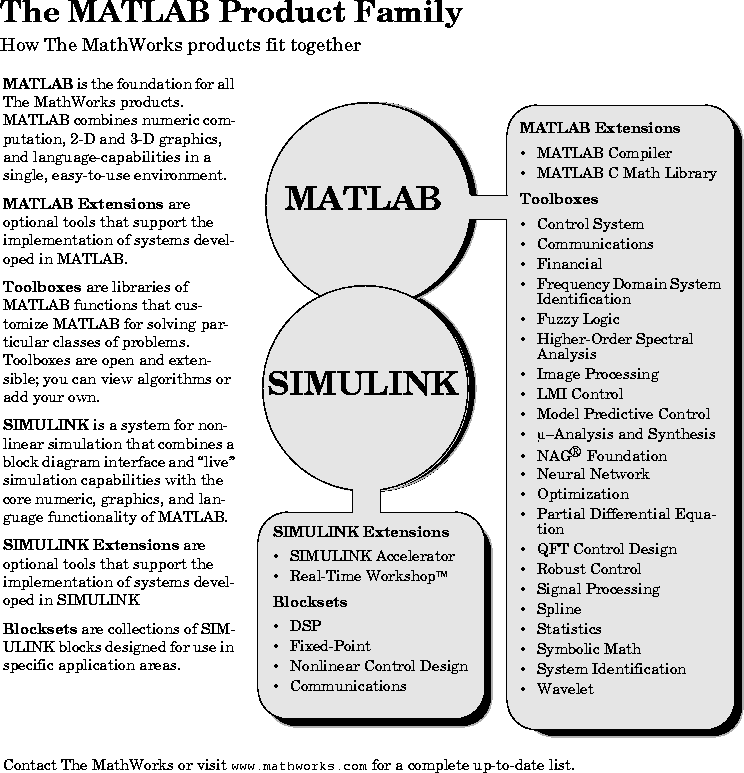What I Should Do
I need to install MATLAB.
| See the Installation Guide for your platform.
|
I'm new to MATLAB and
want to learn it fast.
| Start by reading Getting Started with MATLAB. The most
important things to learn are how to enter matrices, how to use
the : (colon) operator, and how to invoke functions. After you
master the basics, you can access the rest of the documentation
as needed, or you can use online help and the demonstrations to
learn other commands.
|
I'm upgrading from
MATLAB 4.
| Read the MATLAB 5 New Features Guide to find out about the
new features in MATLAB 5. Pay special attention to the
Upgrading to MATLAB 5 section for how to convert your M-files.
You should then refer to Using MATLAB and Using MATLAB
Graphics for specific details about the new features.
|
I want to know how to use a
specific function.
| Use the online help facility. You can use the M-file help window
to get brief online help or access the full function reference via
the web-based Help Desk. These are available using the commands helpwin and helpdesk or from the Help menu on the PC
and Macintosh. The function reference is also available on the
Help Desk in PDF format if you wish to print out any of the function descriptions in high-quality form.
|
I want to find a function for
a specific purpose but I don't
know its name.
| There are three choices
- Use
lookfor (e.g. lookfor inverse) from the command line.
- Use the online keyword search from the Help Desk.
- Visit The MathWorks Web site and see if there is a user-contributed file to solve your problem.
|
I want to learn about a specific topic like sparse
matrices, ordinary differential equations, or cell arrays.
| See the appropriate chapter in Using MATLAB.
|
I want to know what functions are available in a general area.
| Use the help window (type helpwin or select from Help menu) to
see a table of contents with functions grouped by subject area, or
use the Help Desk (type helpdesk or select from Help menu) to
see the Function reference grouped by subject.
|
I have a problem I want help
with.
| For tips and troubleshooting problems, use the Help Desk (type
helpdesk or select from Help menu) to visit the Technical Support section of The MathWorks Web site (www.mathworks.com)
and use the Solution Search Engine to search the Technical Support database of problem solutions.
|
I want to report a bug or
make a suggestion.
| Use the Help Desk (type helpdesk or select from Help menu) or
send e-mail to bugs@mathworks.com or suggest@mathworks.com.
|
I want to contact The MathWorks Technical Support.
| Use the Help Desk (type helpdesk or select from Help menu) to
submit an e-mail help request form describing your question or
problem.
|
